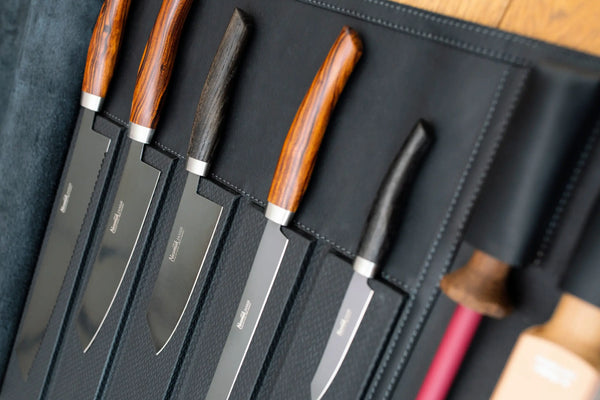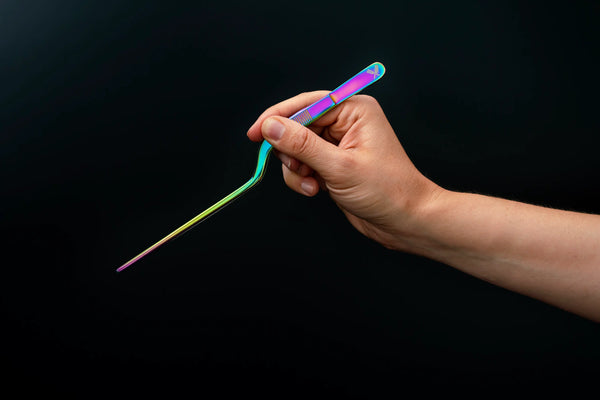
Nesmuk - Knife handles
Nesmuk offers its knives with 10 exceptional handle options. The shape of the knives is adapted to the hand, making them comfortable to hold even for extended periods. Only the finest woods, some of which are hand-selected and certified, are used for the wooden handles. Nesmuk also offers two high-tech synthetic materials: Juma and Micarta.

Juma Black
Juma Black is a high-quality plastic with a very high mineral content. The material is very hard and shatter-proof, as well as very easy to care for, as it is completely resistant to water, grease, and cleaning agents. Juma is also particularly characterized by its good thermal properties, making it comfortable to hold at all times. Juma Black is deep black, and the polished surface exhibits a fine sheen.

Karelian curly birch
Karelian curly birch is a small birch species native to Northern Europe, primarily in the border region between Finland and Russia. Due to its slow growth, the light gray to light brown wood exhibits a strong, contrasting grain. Karelian curly birch is a typical knife handle for traditional Scandinavian knives and is unmistakable due to its striking grain.

Micarta Black
Micarta Black is a high-tech synthetic material whose characteristic grain is created by dyeing linen. Micarta is a shock-resistant, hard, and shatter-proof material, as well as resistant to moisture, acids, and alkalis, making it a popular handle material, especially among professional chefs.

Micarta Green
Micarta Green is a high-tech synthetic material whose characteristic grain is created by dyed linen. Micarta is a shock-resistant, hard, and shatter-proof material, as well as resistant to moisture, acids, and alkalis, making it a popular handle material, especially among professional chefs.

Micarta Red
Micarta Red is a high-tech synthetic material whose characteristic grain is created by dyeing linen. Micarta is a shock-resistant, hard, and shatter-proof material, as well as resistant to moisture, acids, and alkalis, making it a popular handle material, especially among professional chefs.

Bog oak
Bog oak is not a separate wood species: It is actually a subfossil oak trunk, up to 5,000 years old, that has lain in northern German bogs and waterways. When such a trunk is found and recovered from a bog, it must first undergo a complex drying process that takes several years before it can be processed. The color varies between brownish and bluish-black tones.

Olive wood
Olive wood is undoubtedly one of the most beautiful woods. Nesmuk uses exclusively hand-picked pieces of wild olive wood from a specific region in Spain—with a particularly spectacular grain, ranging from light brown to golden yellow, wildly patterned with dark streaks. The handles are deliberately left unpolished to preserve the pleasantly soft feel of the olive wood.

Walnut burl
Walnut burl, in the quality selected by Nesmuk, is one of the rarest and most expensive European woods. The true walnut is found primarily in Central and Southern Europe. The heartwood alone is a sought-after precious wood, and the valuable wood of the rare burls is even more beautiful: Very heavy and hard, walnut burl is characterized by its fine, dark to golden brown grain.

Desert ironwood
Desert ironwood originates from the Sonoran Desert in the USA and Mexico, where it is one of the longest-living tree species and can live up to 1,500 years. The tree is strictly protected, and only small amounts of naturally dead wood are available. It is one of the densest, heaviest, and hardest woods in the world and requires complex and demanding processing.

Juniper
Juniper wood is often used for knife handles due to its hardness, beauty, and durability. It has a fine, even grain and a warm, reddish-brown color that develops an attractive patina over time. In addition to its aesthetic qualities, juniper wood is characterized by its robustness and durability. It also lends the knife handle a pleasant feel and ensures a good grip.


